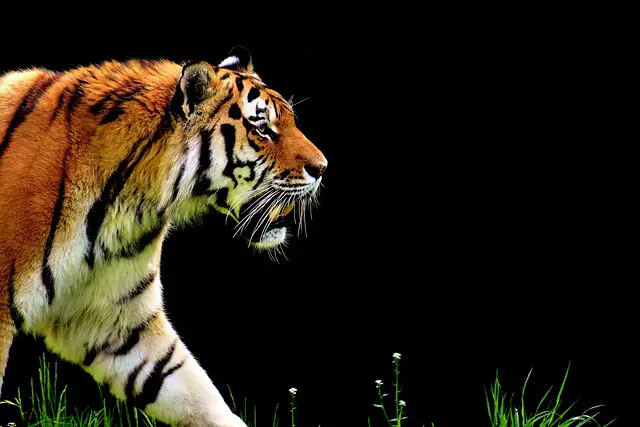
Talk about having a tiger in your tank. Tasmanian tigers have been extinct for nearly 100 years — but the carnivorous creatures could be making a comeback, thanks to the combined efforts of the University of Melbourne, Australia, and Colossal Biosciences.
The Tasmanian tiger, or thylacine, was the largest meat-eating marsupial to ever roam the Earth. When people think marsupial, they usually picture a kangaroo as the typical beast that carries its babies in a pouch. But thylacines share that distinction. Now, the Thylacine Integrated Genetic Restoration Research, led by Dr. Andrew Pask, is teaming up with Colossal to undertake the herculean task of resurrecting the creature, which was officially declared extinct in the 1980s.
“We are so excited for TIGRR to partner with Colossal on this journey,” says Pask, a Colossal Biosciences scientific advisory board member and professor of biosciences at the University of Melbourne. “We both share the same vision and passion to de-extinct the thylacine. Working together will enable us to make this a reality faster than we could have ever hoped. This partnership will drive the development of new technologies with immediate conservation applications for marsupials which are currently facing major ecological pressures as well as underpinning the de-extinction of the unique marsupial apex predator, the thylacine.”
Colossal Biosciences Has the Technology
Some may think bringing back long-lost varmints like the Tasmanian tiger only happens in Jurassic Park blockbusters. But Pask says, “There is no technology we need to bring an animal back that we don’t already have.” Other scientists agree. The TIGRR Lab has already sequenced the thylacine’s genome by using the DNA from preserved animals. The next step, which is by no means easy, is creating a living, breathing Tasmanian tiger from the sequenced genome.
The technology supporting Pask’s efforts is provided by genetic engineering giant Colossal, headed by serial entrepreneur Ben Lamm. As CEO, he’s expending all his efforts on this major de-extinction project. The process involves comparing the DNA of an extinct species with its closest relative to understand the differences between the two.
“We take DNA from existing species that are the closest relatives; in the case of the thylacine, it’s the fat-tailed dunnart,” said Lamm in a statement. While the thylacine is called a tiger, its kin is actually a mouselike marsupial that lives in Australia. Pask shared details about the next step, saying, “We go into the cells and start making edits, and essentially engineer a dunnart cell into a thylacine cell.”
The team will then use IVF technology to transform the cell into a living organism. Marsupials would be relatively easier to bring back to life because of their short gestation period and small size.
“Thylacines give birth to babies that are not much bigger than a grain of rice, so growing the embryo in a test tube or through a surrogate is much less challenging [for us] for a marsupial than a mammoth,” Pask explained. The team thinks that the dunnart could act as a surrogate and give birth to a thylacine, which could be reared in an artificial pouch environment.
If this is successful, the process could be used for other marsupials that are on the brink of extinction — for instance, the koala bear, which has been designated endangered. Due to the threat posed by climate change, scientists are currently collecting the tissue of endangered species so they can bring them back in the future if needed.
The Tasmanian Tiger Controversy
Reviving the Tasmanian tiger isn’t immune from controversy. Certain factions don’t even believe the animal is extinct.
Neil Waters is a member of the Thylacine Awareness Group Tasmania. He’s posted several images online as proof of the present existence of thylacines; however, experts disagree.
“You’ve got to be out there to see it and I think with a bit more investigation, we can prove the thylacine is still out there,” Waters insisted.
The de-extinction project supported by Colossal Biosciences isn’t only focused on the Tasmanian tiger. The company is also trying to revive the woolly mammoth in an effort described as a “landmark de-extinction project.” Its efforts are also supported by “like-minded impact investors” including superstar acting brothers Chris and Liam Hemsworth. The company has already raised $75 million in funding.
The company wrote on its website that it aims to create “a cold-resistant elephant with all of the core biological traits of the woolly mammoth.” For this project, it will be using the DNA of the closest relative of the woolly mammoth, the Asian elephant. In the future, the company also hopes to use its processes to save endangered species from extinction through cloning.
Lamm told Newsweek, “From a Colossal perspective, we are interested in pursuing de-extinction projects where the reintroduction of the restored species can fill an ecological void that was created when the species went extinct and help restore the degraded ecosystem.”










